Summary
In order to meet the road testing requirements and standards of intelligent driving vehicles with richer scenarios, the application scope of driving robots and driving platform vehicles is becoming increasingly extensive, gradually becoming an essential tool for intelligent driving testing. This experiment simulated three common testing scenarios on actual roads to verify the active safety performance of the tested vehicles.
Test 1: AEB performance testing of vehicles in CCRs scenarios
Testing process: In the scenario of a vehicle driving straight and a stationary target vehicle ahead, the CCRs target vehicle is stationary and the VT is on the VUT driving path. The VUT tests the AEB function at a speed of 60km/h to evaluate the vehicle's ability to recognize and emergency brake the stationary target vehicle ahead while driving at high speeds.
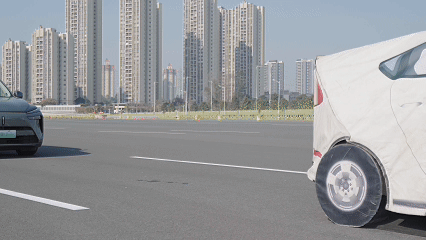
Figure 1. AEB Test
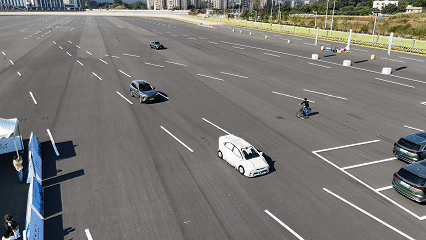
Figure 2. AEB Test
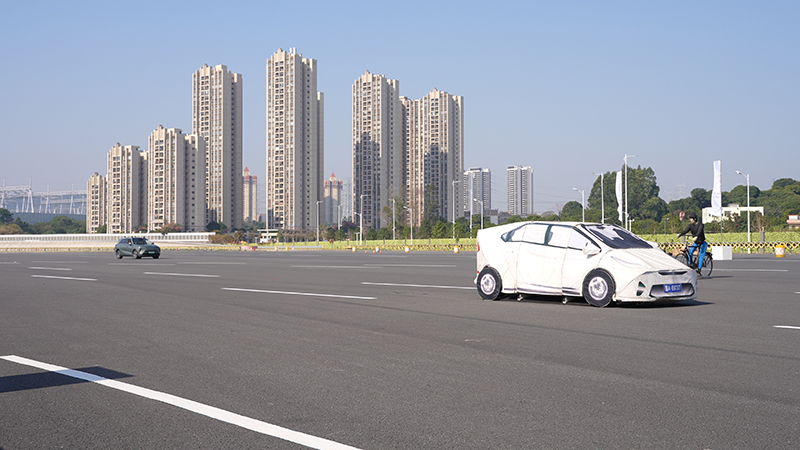
Figure 3. GST Target Vehicle
Test 2: AEB performance testing of test vehicles in the CBNAO scenario
Test process: In the scenario of a near end adult obstacle collision test between a car and a cyclist, simulate an electric bicycle moving at a speed of 15km/h in a direction perpendicular to the vehicle's direction of travel. VUT is tested at a speed of 40km/h, with the collision location at 50%, to evaluate the vehicle's recognition and emergency braking capabilities for sports bicycles while in motion.
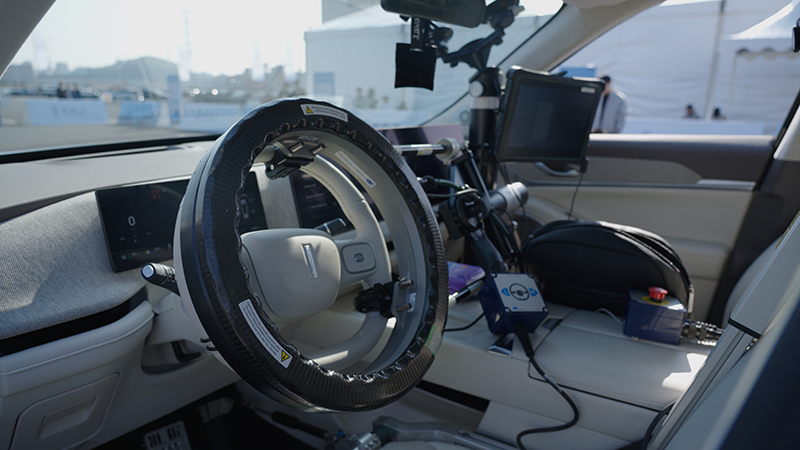
Figure 4. Driving Robot
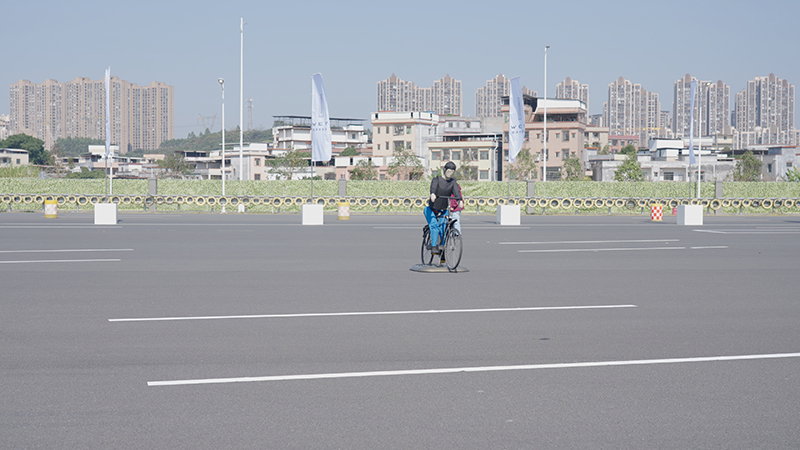
Figure 5. Driving a flatbed truck
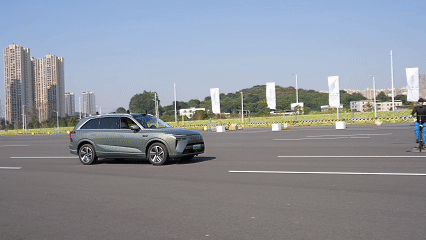
Figure 6. AEB Test
Test 3: RCTB performance testing of vehicles in the scenario of crossing pedestrians in a backward direction
Test process: In the scenario of crossing pedestrians in a backward direction, the test vehicle is in reverse gear and driving at 8km/h with the steering wheel within the free range of zero position and centered; The child moves at a speed of 5km/h perpendicular to the direction of vehicle travel, with the collision location at 50%, to evaluate the vehicle's reverse AEB performance.
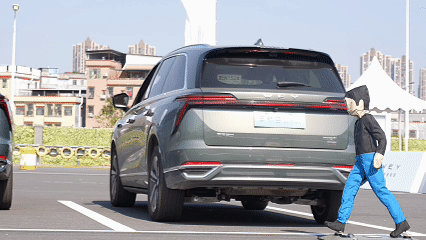
Figure 7. RCTB Performance Test
Epilogue
Our testing equipment parameters meet testing standards such as E-NCAP, C-NCAP, IVISTA, etc., and are used to perform AEB, AES-VRU, ADAS and other test tests. They can achieve precise and repeatable control of all key movement characteristics in automatic vehicle testing scenarios. Our testing equipment is specifically designed to meet the requirements of intelligent driving road testing. If you have intelligent driving road testing needs, please feel free to use our testing equipment. If you have any questions about the use of driving robots or driving platforms, please feel free to contact us. We can provide you with customized solutions for driving robots and driving platforms.